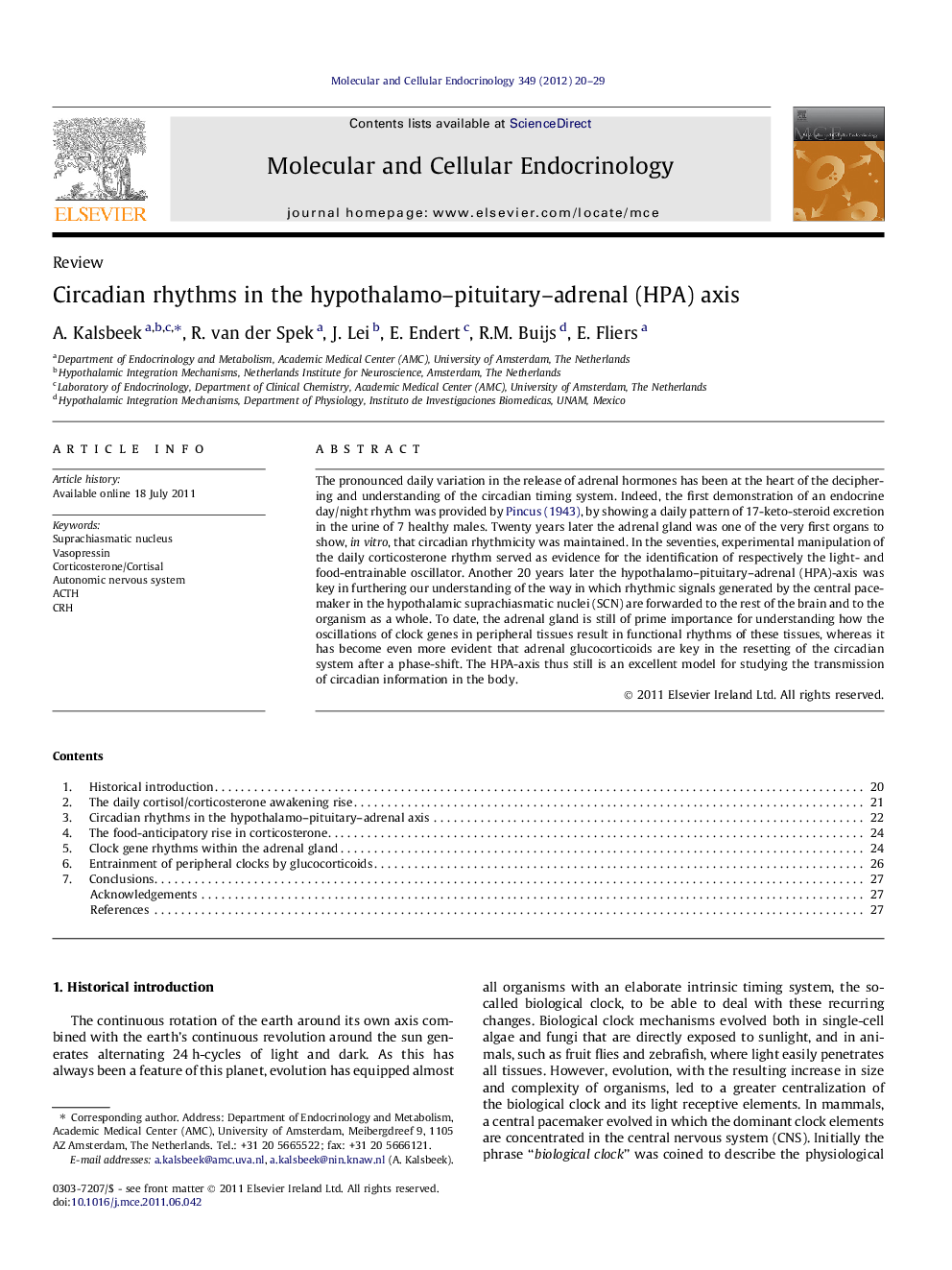| کد مقاله | کد نشریه | سال انتشار | مقاله انگلیسی | نسخه تمام متن |
|---|---|---|---|---|
| 2196439 | 1098821 | 2012 | 10 صفحه PDF | دانلود رایگان |

The pronounced daily variation in the release of adrenal hormones has been at the heart of the deciphering and understanding of the circadian timing system. Indeed, the first demonstration of an endocrine day/night rhythm was provided by Pincus (1943), by showing a daily pattern of 17-keto-steroid excretion in the urine of 7 healthy males. Twenty years later the adrenal gland was one of the very first organs to show, in vitro, that circadian rhythmicity was maintained. In the seventies, experimental manipulation of the daily corticosterone rhythm served as evidence for the identification of respectively the light- and food-entrainable oscillator. Another 20 years later the hypothalamo–pituitary–adrenal (HPA)-axis was key in furthering our understanding of the way in which rhythmic signals generated by the central pacemaker in the hypothalamic suprachiasmatic nuclei (SCN) are forwarded to the rest of the brain and to the organism as a whole. To date, the adrenal gland is still of prime importance for understanding how the oscillations of clock genes in peripheral tissues result in functional rhythms of these tissues, whereas it has become even more evident that adrenal glucocorticoids are key in the resetting of the circadian system after a phase-shift. The HPA-axis thus still is an excellent model for studying the transmission of circadian information in the body.
► The release of adrenal glucocorticoid hormones shows a pronounced daily rhythm.
► The corticosterone rhythm was crucial to localize the brain master clock in the SCN.
► The brain–adrenal axis has been key in understanding how SCN output is forwarded.
► The adrenal gland is of prime importance to understand how peripheral clocks work.
► Glucocorticoids are important for resetting the circadian system after a phase-shift.
Journal: Molecular and Cellular Endocrinology - Volume 349, Issue 1, 5 February 2012, Pages 20–29